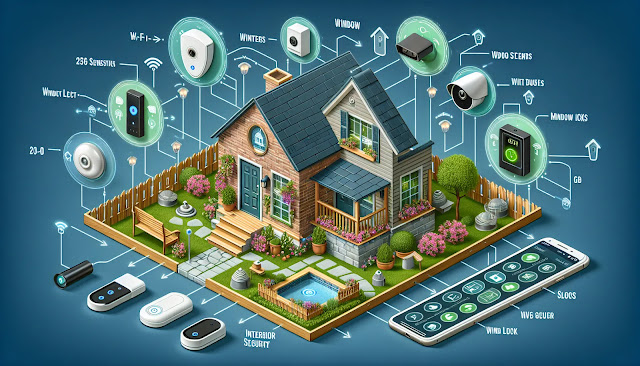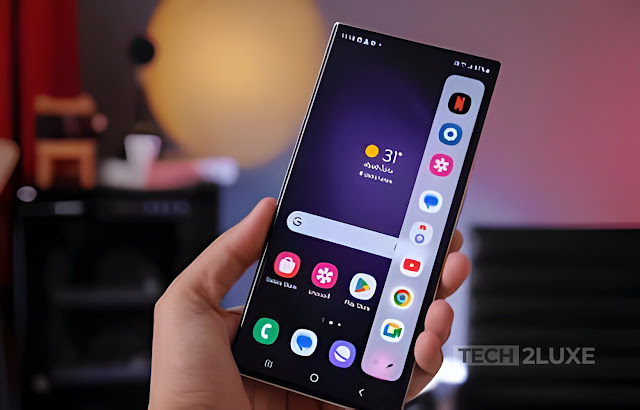Smart Lighting 101: A Beginner's Guide to Illuminating Your Home
Benefits of Smart Lights
Smart lights have revolutionized the way we illuminate our homes. With the advent of technology, traditional lighting solutions have taken a backseat, and smart lighting has emerged as the new trend. These innovative lighting systems offer a plethora of benefits that not only enhance the ambiance of your home but also provide convenience and energy efficiency. In this article, we will explore the various advantages of smart lights and why they are a wise investment for any homeowner.
1. Energy Efficiency:
One of the key benefits of smart lights is their energy efficiency. Unlike traditional bulbs, smart lights are designed to use minimal power while providing maximum illumination. They are equipped with advanced technology such as LED bulbs, which consume significantly less energy compared to incandescent or fluorescent bulbs. This means that by replacing your old bulbs with smart lights, you can significantly reduce your energy consumption and contribute to a greener and more sustainable environment.
2. Wireless Lighting Control:
Smart lights offer wireless lighting control, allowing you to effortlessly control the lighting in your home using a smartphone, tablet, or voice commands. With just a few taps on your device or a simple voice command, you can dim the lights, change their color, or even schedule them to turn on and off at specific times. This level of convenience and control not only adds to the comfort of your home but also enhances the overall user experience.
3. Home Security:
Smart lights also serve as a valuable home security tool. With features such as motion sensors and remote access, you can program your lights to turn on automatically when someone enters a room or when you're away from home, giving the impression that someone is present. This can act as a deterrent to potential intruders and provide you with peace of mind knowing that your home is secure even when you're not there.
4. Personalization and Ambiance:
Another major advantage of smart lights is the ability to personalize your lighting and create the perfect ambiance for any occasion. Whether you're hosting a party, watching a movie, or simply relaxing at home, you can adjust the brightness, color, and intensity of your lights to suit your mood. With a wide range of lighting presets and customizable options, you have complete control over the look and feel of your living spaces.
5. Increased Lifespan:
Smart lights are built to last. Unlike traditional bulbs that need frequent replacements, smart lights have a longer lifespan, reducing the need for constant maintenance. LED smart bulbs, in particular, can last for up to 20 years, ensuring that you won't have to worry about changing bulbs frequently. This not only saves you money but also reduces your carbon footprint by minimizing electronic waste.
Wireless Lighting Control
Wireless lighting control is at the core of smart lighting systems. With the ability to control your lights wirelessly, you can enjoy unprecedented convenience and flexibility in managing your home's lighting. Let's delve deeper into how wireless lighting control works and the benefits it offers.
Smart lighting systems utilize wireless communication protocols, such as Wi-Fi, Zigbee, or Bluetooth, to connect your lights to a central hub or smart home automation system. This enables you to control your lights from anywhere in your home or even remotely through a smartphone app.
By connecting your smart lights to a central hub, you can create a network of interconnected lights that can be controlled simultaneously. This means that you can turn on, dim, or change the color of multiple lights in different rooms with just a single command. For example, you can program your lights to turn on automatically when you enter a specific room or create lighting scenes for different activities, such as reading, watching TV, or cooking.
One of the key benefits of wireless lighting control is the convenience it offers. With just a few taps on your smartphone or a voice command to a virtual assistant, you can effortlessly adjust your lights to suit your needs. Whether you want to create a cozy ambiance for a movie night or brighten up your home for a party, wireless lighting control makes it easy and hassle-free.
Wireless lighting control also provides enhanced energy efficiency. With the ability to dim your lights or schedule them to turn on and off automatically, you can minimize energy consumption and reduce your electricity bills. For example, you can program your lights to turn off when no one is in the room or lower their brightness during the daytime when natural light is abundant.
In addition to convenience and energy efficiency, wireless lighting control plays a crucial role in home security. By integrating motion sensors with your smart lights, you can program them to turn on automatically when someone enters a room or approaches your home. This can create the illusion of occupancy, deterring potential intruders and enhancing the security of your home.
Overall, wireless lighting control is a game-changer in the realm of home lighting. It offers unparalleled convenience, energy efficiency, and security, making it an essential feature of any smart home.
Home Lighting Automation
In recent years, home lighting automation has gained immense popularity, thanks to the advent of smart lighting systems. Home lighting automation refers to the ability to automate and control your home's lighting using advanced technology. Let's explore how home lighting automation works and the benefits it brings to homeowners.
Home lighting automation is made possible through the integration of smart lighting systems with a central hub or home automation system. This central hub acts as the brain of your smart home, allowing you to control and automate various aspects of your home, including lighting.
One of the key features of home lighting automation is the ability to schedule your lights to turn on and off at specific times. With just a few taps on your smartphone or a preset schedule, you can ensure that your lights are turned on when you wake up, turned off when you leave the house, and even adjusted to simulate your presence when you're away on vacation.
Another important aspect of home lighting automation is the integration with other smart devices and systems in your home. For example, you can synchronize your lights with your smart thermostat to adjust the lighting based on the temperature or time of day. You can also integrate your lights with your home security system, so they automatically turn on when an alarm is triggered or motion is detected.
Home lighting automation offers a wide range of benefits for homeowners. Firstly, it enhances convenience and simplifies your daily routines. Imagine waking up in the morning to a gently lit room or coming home to a well-lit house without having to fumble for light switches. With home lighting automation, you can create customized lighting scenes and schedules that cater to your lifestyle and preferences.
Secondly, home lighting automation helps to improve energy efficiency. By automating your lights and optimizing their usage, you can significantly reduce energy consumption and lower your electricity bills. For example, you can program your lights to turn off automatically when no one is in the room or adjust their brightness based on the availability of natural light.
Thirdly, home lighting automation adds an extra layer of security to your home. With the ability to simulate occupancy by turning your lights on and off at specific times, you can create the illusion that someone is home even when you're away. This can deter potential intruders and provide you with peace of mind knowing that your home is protected.
Overall, home lighting automation is a powerful tool that enhances your home's functionality, energy efficiency, and security. By integrating advanced technology into your lighting system, you can transform your home into a smart and connected space that caters to your needs and preferences.
Smart Lighting Technology
Smart lighting technology has come a long way in recent years, transforming the way we light up our homes. From basic on/off switches to sophisticated lighting control systems, smart lighting technology has revolutionized the lighting industry. Let's take a closer look at the key components and features of smart lighting technology.
1. Smart Bulbs:
Smart bulbs are the heart of any smart lighting system. Unlike traditional bulbs, smart bulbs are equipped with built-in wireless communication capabilities, allowing them to connect to a central hub or smart home automation system. Smart bulbs are available in various types, including LED, CFL, and incandescent, and can be controlled wirelessly using a smartphone, tablet, or voice commands.
2. Central Hub:
A central hub acts as the control center of a smart lighting system. It serves as the bridge between your smart bulbs and your smartphone or other smart devices. The central hub enables you to control and automate your lights, create lighting scenes, and access advanced features such as scheduling and remote access.
3. Wireless Communication Protocols:
Smart lighting systems utilize wireless communication protocols to enable seamless connectivity between the central hub and the smart bulbs. The most common wireless protocols used in smart lighting technology include Wi-Fi, Zigbee, and Bluetooth. Each protocol has its own strengths and limitations in terms of range, bandwidth, and power consumption.
4. Lighting Control Apps:
Lighting control apps are an integral part of smart lighting systems. These apps allow you to control your lights wirelessly from your smartphone or tablet. Depending on the brand and model of your smart lighting system, the lighting control app may offer various features such as dimming, color control, scheduling, and scene creation.
5. Voice Control:
Voice control has become increasingly popular in smart lighting technology. With the integration of virtual assistants like Amazon Alexa or Google Assistant, you can control your lights using simple voice commands. This hands-free control adds another level of convenience and accessibility to your smart lighting system.
6. Motion Sensors:
Motion sensors are a common feature in smart lighting systems. These sensors can detect movement in a room and trigger the lights to turn on or off automatically. Motion sensors not only enhance convenience but also contribute to energy efficiency by ensuring that lights are only turned on when needed.
7. Dimming and Color Control:
Smart lighting technology allows you to adjust the brightness and color of your lights to create the perfect ambiance for any occasion. Whether you want to create a cozy atmosphere for a movie night or set the mood for a party, you can easily dim the lights or change their color using a smartphone app or voice commands.
8. Integration with Other Smart Devices:
Smart lighting systems can be integrated with other smart devices and systems in your home, such as thermostats, security systems, and entertainment systems. This integration allows you to create a seamless smart home ecosystem where different devices work together to enhance comfort, energy efficiency, and security.
Smart lighting technology offers a wide range of features and capabilities that can transform your home's lighting experience. From wireless control and energy efficiency to personalized customization and integration with other smart devices, smart lighting technology is reshaping the way we illuminate our living spaces.
Beginner's Guide to Smart Lighting
If you're new to the world of smart lighting, navigating through the options and features can be overwhelming. This beginner's guide will walk you through the essentials of smart lighting and help you make informed decisions when choosing and setting up your smart lighting system.
1. Understand the Basics:
Before diving into the world of smart lighting, it's important to familiarize yourself with the basics. Understand the different types of smart bulbs available, such as LED, CFL, and incandescent, and their respective benefits. Learn about the wireless communication protocols used in smart lighting systems, such as Wi-Fi, Zigbee, and Bluetooth. This foundational knowledge will help you make informed decisions when selecting your smart lighting components.
2. Evaluate Your Needs:
Identify your needs and priorities when it comes to smart lighting. Consider factors such as energy efficiency, convenience, security, and personalization. Do you want to reduce your energy consumption and lower your electricity bills? Are you looking for convenience and ease of control? Do you prioritize home security and want to integrate your lights with other smart security devices? Understanding your needs will guide you in choosing the right smart lighting system for your home.
3. Research and Compare Products:
Do thorough research and compare different smart lighting products before making a purchase. Read reviews, check product specifications, and compare prices to find the best value for your money. Look for reputable brands that offer reliable products and good customer support. Consider factors such as compatibility with other smart devices, ease of installation, and the availability of additional features such as dimming and color control.
4. Plan Your System:
Before setting up your smart lighting system, it's essential to plan and strategize. Determine which areas of your home you want to equip with smart lights and create a lighting plan. Consider the functionality and purpose of each room and how smart lighting can enhance the ambiance and functionality. Take into account factors such as the number of bulbs needed, the type of bulbs, and the placement of the central hub or control panels.
5. Start Small and Expand:
If you're new to smart lighting, it's wise to start small and gradually expand your system. Begin by equipping a single room or a specific area of your home with smart lights. This allows you to familiarize yourself with the technology and assess its benefits firsthand. Once you're comfortable and satisfied with the results, you can gradually expand your system to other areas of your home.
6. Installation and Setup:
When it comes to installation and setup, follow the manufacturer's instructions carefully. Most smart lighting systems are designed for easy installation and do not require professional assistance. However, if you're unsure or uncomfortable with DIY installation, it's always best to seek professional help to ensure proper installation and optimal performance.
7. Explore Advanced Features:
Once you have your smart lighting system up and running, take the time to explore and experiment with its advanced features. Familiarize yourself with the lighting control app and its functionalities, such as scheduling, dimming, and color control. Experiment with different lighting scenes and presets to find the perfect ambiance for different activities and moods.
8. Seek Support:
If you encounter any difficulties or have questions regarding your smart lighting system, don't hesitate to seek support from the manufacturer or online forums. Many manufacturers provide excellent customer support and resources to assist you in troubleshooting and maximizing the benefits of your smart lighting system.
By following this beginner's guide, you'll be well-equipped to embark on your smart lighting journey and enjoy the countless benefits of this innovative technology.






